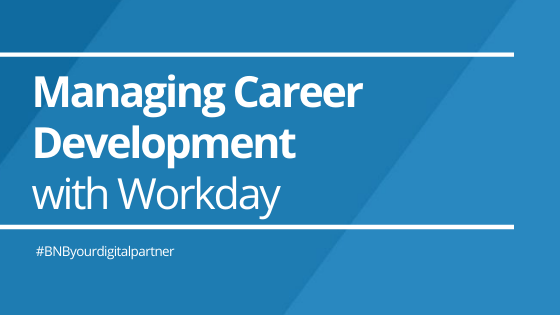With the advent of an increasingly candidate-oriented job market, internal career development has become a major focus of employee satisfaction for HR teams. In order to win the War for Talent, forward-facing organizations understand that a modern company culture and an excellent employee experience are as important as organizational agility and attractive internal development opportunities. Career development perspectives within the organization rank highly amongst priorities for choosing a place to work, and a lack thereof can be costly for companies that choose to ignore this, as its impact on attrition may be significant. Not only will candidates and employees preferably work for companies that can boast powerful internal career opportunities, they will also be more productive and committed to the organization.
Successfully managing career development within the organization necessitates great coordination and foresight by the HR department, but it also requires the help of a HRIS software in order to manage and organize the relevant data. Workday HCM offers a number of integrated talent and career management features which can be instrumental to achieving this task.
Let’s take a closer look at some key elements of career development in Workday.

Interests in Workday enable employees of an organization to create and maintain information related to their career and job interests. Using Interests, your employees can plan their career growth or job transitions within your organization.
Workday allows employees to enter a variety of information relevant to their career interests and development aspirations. Concretely, this includes an employee’s interest in specific job profiles, types of skills to attain and development preferences (vertical or lateral, etc.). Additional information can be entered for geographic mobility, i.e. willingness to travel and relocate. Employees have two options to enter this: by navigating to their worker profile, or by leveraging the Talent and Performance Dashboard – your workers’ one-stop-shop for all things career and development.

After indicating their career interests, employees can directly compare open jobs which suit the desired job profiles and leverage the Compare Job report to compare their own skills profile to the desired profile’s requirements. This can be a powerful way to map out potential career trajectories and share career aspirations with managers to help plan the learning required to grow in their current roles or transition into other roles.

The Opportunity Graph is another powerful tool employees can leverage to map out, visualize, and take action on their career perspectives. It is a self-service exploration tool that employees can use to better understand the possible transitions from their current job profile. This graph visualizes potential internal development tracks based on historical job profile movement transactions for every job profile in your Workday tenant. It doesn’t predict the likelihood of an employee moving into a certain job profile, or recommend moves for specific employees based on a set of criteria. The Opportunity Graph will display interesting development roles accordingly, and employees can drill into job profile details in order to understand qualification requirements, explore learning opportunities, and add the job profile to their interests.

In addition to career interests, employees have the option to add a variety of relevant career data, such as specific skills, certifications obtained and relevant work experience, thereby increasing their internal visibility for internal projects and opportunities.
HR departments on the other hand will be able to leverage this data in order to
– identify skills gaps in the organization
– assess training and development requirements
– drive succession planning
– find internal candidates for positions they are looking to fill.
A number of powerful reports will help achieve this. The Compare Job Profile to Worker report allows you to compare the potential talent available in your organization with a specific job profile that may be high in demand. A faceted search in the Find Workers report will allow filtering by specifically required skills or experiences, or, if desired, career interests.
Key take-aways
Improving retention, reducing flight risk and fostering an organizational culture of development are key challenges for today’s HR departments. Workday can drive HR excellence and assist in overcoming these challenges by empowering employees to share their career aspirations, experience and skills and thereby increasing their visibility. HR teams are equally empowered to leverage this data and use Workday’s tools to get their employees on the right track and make sure high attrition is not a major concern for them.
Get in touch with us.
Fill out the contact and someone from our team will get in touch with you as soon as possible.



